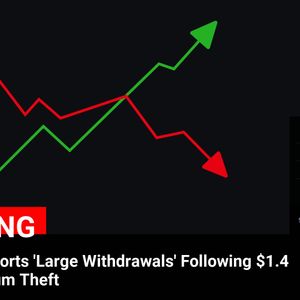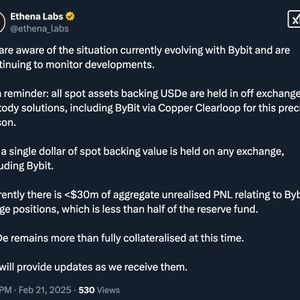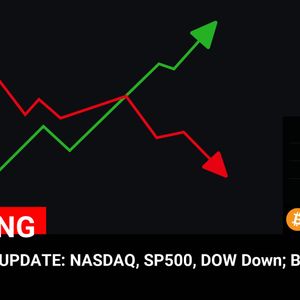In a move that has sent ripples through the forex markets, Bank of Japan (BoJ) Board Member Hajime Takata has signaled a crucial pivot in monetary policy. Even after January’s much-anticipated rate hike, Takata emphasizes the necessity for a gradual BoJ policy shift . For crypto investors and forex traders keenly watching global economic trends, this development in Japan, a major player in the global economy, presents significant implications. Let’s delve into what this means for the markets and what to expect from the BoJ’s future actions. Decoding BoJ’s Gradual Policy Shift: Why Now? Takata’s recent statements underscore a nuanced approach by the BoJ. While January witnessed a rate hike, a landmark move after years of ultra-loose monetary policy, it appears to be just the beginning of a longer, more deliberate process. Why is this gradual BoJ policy shift so important? Here are the key reasons: Avoiding Upside Inflation Risks: Takata explicitly stated the need to avoid “upside price risks from materialising.” This suggests that while the BoJ is aiming for its inflation target, it is wary of inflation spiraling out of control. Deeply Negative Real Interest Rates: Despite the rate hike, Japan’s real interest rates remain significantly negative. This means the accommodative monetary environment persists, necessitating further adjustments. Economic Forecast Alignment: Takata indicated that further monetary support adjustments are contingent on the economy progressing in line with the BoJ’s forecasts. This data-dependent approach highlights the BoJ’s cautious stance. Uncertainty in the US Economic Outlook: Global economic uncertainties, particularly concerning the US economy, are weighing on the BoJ’s decision-making. A cautious approach is deemed necessary due to these external factors. Difficulty Gauging Neutral Rate Level: Determining the neutral rate level, the interest rate that neither stimulates nor restricts economic growth, is proving challenging. The BoJ is proceeding cautiously due to this uncertainty. In essence, the BoJ is walking a tightrope, aiming to normalize policy without triggering economic instability or market volatility. This delicate balancing act is crucial for Japan’s economic future and has significant ramifications for global markets. Navigating Inflation Risks in Japan: The Balancing Act Post-Japan Rate Hike Inflation is at the heart of the BoJ’s policy considerations. While the Japan rate hike in January was a step towards controlling price pressures, Takata’s comments reveal a deeper concern about potential inflation risks Japan faces. Let’s break down the key inflation-related factors influencing the BoJ: Factor Impact on Inflation BoJ’s Stance Weak Yen Upward pressure on import prices, potentially accelerating inflation. Monitoring closely as a risk factor that could overshoot inflation targets. Bumper Pay Hikes Expected to drive domestic demand and contribute to achieving the BoJ’s inflation target. Hopeful that wage gains will lead to durable achievement of the price target. Long-term Inflation Expectations Steadily heightening, indicating a shift in mindset that could solidify inflationary pressures. Views this as a positive sign, suggesting progress towards the inflation target. Consumption Trends Rising moderately, expected to continue increasing, supporting demand-driven inflation. Sees moderate consumption growth as a positive contributor to inflation. Business Investment Companies maintaining a bullish investment stance, indicating confidence and potential for economic expansion, further fueling demand. Positive indicator of economic strength and inflationary potential. Takata highlighted the hope that Japan will achieve durable inflation from fiscal year 2025 onwards, driven by solid wage gains and domestic inflationary pressure. However, he also cautioned about the risk of inflation accelerating more than anticipated due to the weak Yen and significant pay increases. This duality underscores the complexity of the BoJ’s current position. Impact on USD/JPY and Forex Markets: Market Reaction to BoJ’s Stance The forex markets reacted swiftly to Takata’s remarks. Notably, the USD/JPY reaction was immediate, with the pair flirting with intraday lows near 151.80 following his comments. This 0.12% dip, while seemingly small, reflects the market’s sensitivity to BoJ policy signals. Here’s what forex traders should consider: Yen Strength Potential: Takata’s emphasis on gradual policy shifts suggests further tightening measures are on the horizon. This anticipation could lend strength to the Yen in the medium to long term. USD/JPY Volatility: Expect continued volatility in the USD/JPY pair as markets digest BoJ communications and economic data releases. Any hints of faster or slower policy normalization will likely trigger significant movements. Carry Trade Implications: For those involved in carry trades, particularly those leveraging the low-yielding Yen, the prospect of rising Japanese interest rates warrants careful consideration. The attractiveness of Yen-funded carry trades may diminish as rates climb. Broader Forex Market Impact: BoJ policy shifts can have broader implications for global forex markets, influencing risk sentiment and capital flows. Traders should monitor BoJ developments as part of their global macro analysis. The market’s reaction to Takata’s comments is a clear indicator of the BoJ’s influence on currency valuations. As the BoJ navigates its policy normalization path, traders must remain vigilant and adapt to the evolving dynamics of the USD/JPY reaction and broader forex landscape. What Does This Mean for the Future of Japan’s Monetary Policy? Takata’s statements paint a picture of a BoJ committed to a gradual and cautious policy normalization. The monetary policy Japan is set to undergo is not a sudden, sharp turn, but rather a measured evolution. Key takeaways for understanding the future trajectory include: Data Dependency: The BoJ’s future actions will be heavily reliant on economic data, particularly inflation and wage growth figures. Market participants should closely monitor these indicators. Flexibility and Caution: The BoJ is prioritizing policy flexibility due to global economic uncertainties and the challenges in assessing the neutral rate. This suggests a willingness to adapt its approach as circumstances evolve. Focus on Domestic Factors: The emphasis on wage hikes and domestic inflationary pressure signals a shift towards internally driven inflation, a potentially more sustainable and desirable form of price growth for the Japanese economy. Reduced Market Volatility Risk: Takata noted that the risk of big market fluctuations has receded, potentially giving the BoJ more room to maneuver in its policy adjustments. In conclusion, the BoJ’s path forward is one of gradualism and vigilance. For cryptocurrency and forex market participants, understanding these nuances is crucial for navigating the evolving economic landscape and making informed investment decisions. The era of ultra-loose monetary policy in Japan is slowly transitioning, presenting both opportunities and challenges for global markets. To learn more about the latest Forex market trends, explore our article on key developments shaping interest rates liquidity.



















